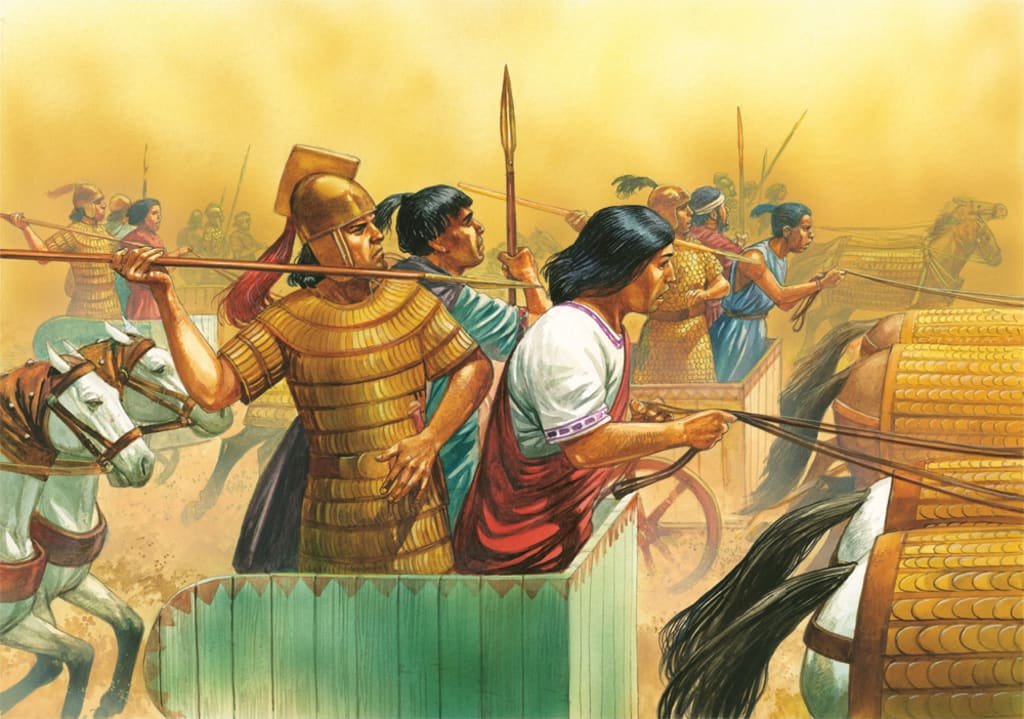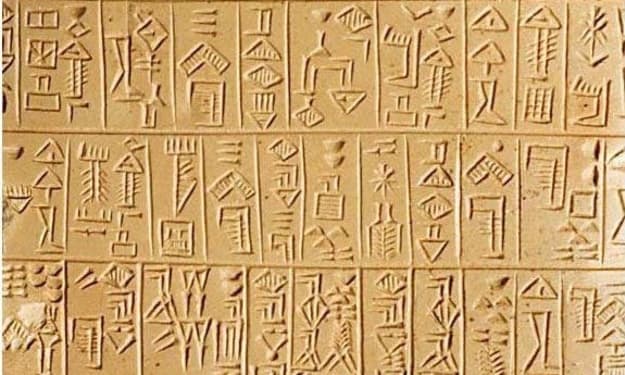Hittite War Chariots
Hittite Chariots: Advanced military vehicles that contributed to the Hittites' dominance in warfare, showcasing innovations in mobility and combat.

The Hittite war chariot, a formidable weapon of ancient warfare, stands as a testament to the military ingenuity and engineering prowess of the Hittite civilization. Emerging from the powerful Hittite Empire, which flourished in Anatolia (modern-day Turkey) from around 1600 BCE to 1178 BCE, these chariots played a crucial role in shaping the course of ancient battles. Understanding the origins, design, and impact of Hittite war chariots provides a fascinating glimpse into one of history's most influential yet often overlooked military innovations.
The Hittites were among the first civilizations to develop and perfect the use of the war chariot. While chariots had been used by other ancient cultures, the Hittites made significant advancements that set their chariots apart. Their innovation lay in the design and tactical use of these vehicles, which combined speed, mobility, and striking power in unprecedented ways.
The construction of Hittite war chariots was a sophisticated process that required advanced knowledge of materials and mechanics. The chariot's frame was typically made of lightweight wood, which allowed for greater speed and maneuverability. The wheels were a crucial component, often featuring six spokes, which provided a balance between strength and weight. These wheels were usually reinforced with leather or metal to enhance durability.
One of the key innovations of the Hittite chariot was the axle placement. Unlike earlier chariots, which had their axles positioned at the rear, the Hittite chariots had a central axle. This design improvement allowed for better weight distribution and stability, making the chariot less likely to tip over during high-speed maneuvers. This central axle also facilitated greater agility, enabling the chariot to turn more sharply and respond quickly to changes on the battlefield.
The chariot was typically manned by a team of three: a driver, a warrior, and a shield-bearer. The driver's role was to expertly maneuver the chariot, guiding it across the battlefield with precision. The warrior, armed with weapons such as spears, javelins, and bows, was responsible for engaging the enemy. The shield-bearer provided additional protection, using a large shield to defend against incoming attacks while also assisting with offensive operations.
Hittite war chariots were pulled by a team of horses, usually two or sometimes four, specially bred and trained for speed and endurance. The Hittites were renowned for their horse training techniques, which were critical for ensuring the effectiveness of their chariots in combat. These horses were equipped with harnesses and bridles designed to maximize their performance and control.
The tactical use of chariots by the Hittites revolutionized ancient warfare. Chariots were used to break enemy lines, exploit weaknesses, and pursue fleeing troops. Their speed and mobility allowed the Hittites to execute rapid strikes and retreats, keeping their enemies off balance. Chariots were often deployed in large formations, creating a formidable force that could overwhelm opposing armies through sheer momentum and coordinated attacks.
The Hittite chariots were famously utilized in the Battle of Kadesh (1274 BCE), one of the largest chariot battles in history. Fought between the Hittite Empire and the Egyptian Empire under Pharaoh Ramses II, this battle showcased the tactical brilliance and effectiveness of Hittite chariots. Despite the lack of a decisive victor, the Hittites demonstrated their military prowess and the strategic value of their chariot corps.
The impact of Hittite war chariots extended beyond their immediate military successes. They influenced the development of chariot warfare in other cultures, spreading techniques and designs across the ancient Near East and beyond. The technological innovations and tactical strategies developed by the Hittites were studied and adapted by subsequent civilizations, contributing to the evolution of military tactics and engineering.
As the Hittite Empire declined, the legacy of their war chariots persisted. Archaeological discoveries, such as the detailed carvings and inscriptions found in Hattusa (the Hittite capital), provide valuable insights into the construction and use of these chariots. These findings, along with historical records from neighboring civilizations, help modern scholars reconstruct the role and significance of chariots in Hittite society and warfare.
Today, the Hittite war chariot is remembered as a symbol of ancient military innovation and engineering excellence. Its development reflects the Hittites' deep understanding of materials, mechanics, and strategic warfare. The study of these chariots offers a window into the technological and cultural achievements of the Hittite civilization, highlighting their contributions to the broader history of military technology.
As researchers continue to uncover more about Hittite war chariots, new details are expected to emerge about their construction, usage, and historical impact. This ongoing research will likely reveal further aspects of Hittite engineering, military strategy, and the cultural significance of chariots. By delving deeper into these findings, historians and archaeologists hope to gain a more comprehensive understanding of how Hittite war chariots influenced subsequent developments in warfare and technology.
Stay tuned as we continue to explore this and other intriguing aspects of ancient military innovations and their significance. Your engagement fuels our exploration of such captivating tales. If you found this deep dive into the Hittite war chariots fascinating, please share this article with your friends, leave a comment with your thoughts, and subscribe for more enthralling stories. Your support helps us bring more historical mysteries and innovations to light. Thank you for reading!
About the Creator
Marveline Merab
“History never repeats itself. Man always does.”
― Voltaire
Enjoyed the story? Support the Creator.
Subscribe for free to receive all their stories in your feed. You could also pledge your support or give them a one-off tip, letting them know you appreciate their work.






Comments
There are no comments for this story
Be the first to respond and start the conversation.